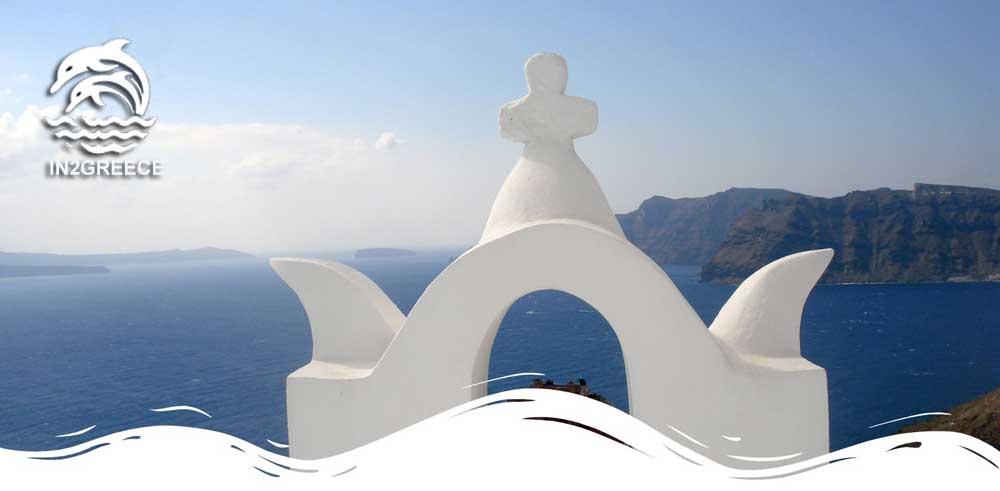Cyclades islands Greece
The islands of the Cyclades were formed from the peaks of the ancient Aegeis, which sank millions of years ago after geological upheavals. Their unique shape, as well as the composition of their soil, is due to earthquakes and volcanic eruptions.
Their name has been known since antiquity, by many writers as well as geologists, who argued that it comes from the word “Circle,” because they form an imaginary circle around Delos. According to mythology, the Cyclades got their name from the Nymphs of the same name, whom Poseidon transformed into rocks.
All the islands of the Cyclades are characterized by a special natural wealth, as their subsoil has a significant variety of useful minerals. Since ancient times, mineral wealth has played a decisive role in their development and evolution.
The magical ensemble of the Cyclades has served as a bridge of communication between continental Greece, Asia, and Africa for the development of trade and the spread of culture since antiquity.
The Cyclades are one of the most popular destinations for all seasons, which, despite tourism development, retain their traditional style. They can combine cosmopolitan flair with intense life, absolute tranquility, and serenity with peaceful holidays.
Taste the rich and unique cuisine made from local products. The cuisine of the Cyclades is simple, with many similarities but also differences from island to island.
All the Cycladic islands have some common features, however, each island has its own unique charm and physiognomy that makes it distinctive and utterly unique.
From prehistoric times to today, the Cycladic culture has its own unique cultural identity, in traditional arts, in preserving customs, and in the countless festivals that take place throughout the year to preserve the religious and cultural tradition of the place.
Explore the historical wealth of the Cyclades through significant historical and archaeological sites, open theaters, castles, towers, and a great variety of museums scattered across many islands.
Admire religious monuments with excellent architecture and great history, with icons, frescoes, and relics of inestimable value. Monasteries, Byzantine churches, and hundreds of picturesque white chapels on the slopes, in the mountains, and in the ravines of the islands.
The islands of the Cyclades are characterized by geographical contrasts and a distinctive relief. High mountains with lush valleys and gorges, kilometers of coastline with hidden harbors, islets, sea caves, shipwrecks, beautiful beaches with a captivating seabed. Significant caves dominate the surrounding landscape, but also on low capes and coastal plains. The lighthouses are easily accessible from the land or the paths once walked by lighthouse keepers, enchanting the visitor.
The trademark of the Cyclades is their traditional architecture, perfectly harmonized with the natural environment, the narrow stone-paved alleys, the white houses with blue doors and windows. The dovecotes are one of the special elements of folk architecture on some islands. However, each island is distinguished by certain elements that make it unique and absolutely unique.
Despite the poor vegetation of the Cycladic islands, there are areas of particular natural beauty with rare flora and fauna, included in the NATURA 2000 network of protected areas. All the islands of the Cyclades are ideal destinations for lovers of alternative tourism, offering a variety of activities. There is an endless variety of signposted trails, which served as the terrestrial communication between settlements. Through these paths, you discover unique treasures leading to peaks, chapels, villages, monuments, bridges, lighthouses, and other magical destinations.
The Cyclades are the largest island complex in the Aegean, comprising about 220 islands, islets, and rocks, with Syros being the capital and largest city.
Geography
The Cyclades were once the peaks of the Aegaides mountains, a continent that sank into the Aegean 5 million years ago. Many of the islands, especially those that lie southwest of Attica and Evia, are rich in crystalline rocks, such as granite, gneiss, marble and slate. Conversely, the southernmost islands, located on the volcanic arc of the southern Aegean (Milos, Thira, Kimolos), have an abundance of volcanic rocks, such as andesite and obsidian. Other sources of mineral wealth, exploited at various times in history, include the copper deposits of Kythnos, and the lead and silver deposits of Sifnos.
The Cyclades are generally arid, with limited flora and fauna and small areas suitable for cultivation and animal husbandry. The climate is dry with lots of sunshine and little rainfall. The strong winds, however, which dominate most of the year (and especially in summer) keep the temperature low and favor coastal sailing.
The soil of the Cyclades is mountainous, as it consists of mountain tops of a land that sank. The height of the mountains is small.
Mountains:
In Naxos extends the Zia mountain range (1,004 m.), In Andros the mountains Agioi Saranda (714 m.), Petalo (1,003 m.) And Kouvaras (975 m.), In Tinos the Tsiknias (713 m.), In Paros the Prophet Elias (750 m.), In Kea the Prophet Elias (568 m.), In Milos the mountains Profitis Elias (751 m.) And Chondrovouno (620 m.), In Amorgos Krikellos (826 m.) in Ios the Tower (737 m.), in Syros the Tower (442 m.), in Kythnos Petra (333 m.), in Mykonos the Anomeritis (364 m.), in Sifnos the Agios Ilias (695 m.), In Thira the Prophet Elias (565 m.), In Sikinos the Troullos (600 m.) And in Anafi the Vigla (484 m.)
Climate
The Cyclades Islands are characterized by a Mediterranean climate, which is known for its mild, wet winters and hot, dry summers. This climate pattern makes the Cyclades a popular destination for visitors, especially during the summer months. Here’s a more detailed look at the climate across the seasons:
Spring (March to May)
Spring sees a gradual increase in temperature, with March starting cooler and temperatures rising through May. It’s a period of moderate rainfall, but by late spring, the days become sunnier and warmer.
Temperature: Average temperatures range from 12°C (54°F) in March to 21°C (70°F) by May.
Spring is ideal for those who prefer to avoid the peak summer crowds. The weather is pleasant for outdoor activities like hiking, sightseeing, and experiencing the blooming landscapes.
Summer (June to August)
Summer in the Cyclades is hot and dry, with plenty of sunshine. Rain is rare, making it perfect beach weather. However, the Meltemi winds, particularly in July and August, can bring cooler, breezy relief but may also cause disruptions to ferry services.
Temperature: Temperatures range from 25°C (77°F) to 30°C (86°F), sometimes reaching higher, especially in July and August.
Summer is peak tourist season. It’s the best time for swimming, sunbathing, and enjoying the vibrant nightlife, though it’s also when the islands are most crowded and prices are highest.
Autumn (September to November)
The heat starts to subside in September, though the sea remains warm enough for swimming. Rainfall gradually increases towards late autumn, but there are still many sunny days.
Temperature: Temperatures fall from an average of 24°C (75°F) in September to around 18°C (64°F) by November.
Autumn is a great time to visit for those looking to enjoy the warm sea without the summer crowds. The weather is still pleasant for outdoor activities and exploring the islands.
Winter (December to February)
Winters are mild and wetter than other seasons, with the most rainfall occurring during these months. While it is cooler, snow is rare, except on higher elevations.
Temperature: Average temperatures range from 10°C (50°F) to 15°C (59°F).
Winter is the low tourist season, perfect for experiencing the local way of life without the crowds. Some tourist facilities may be closed, but it’s a unique time to enjoy the islands’ natural beauty and cultural events.
Economy
The Cyclades are barren islands and so arable land is limited. The soil and climate of the prefecture are suitable for arboriculture, mainly olive cultivation. Livestock breeding of small animals (sheep and goats) is also developed in the prefecture, because there are no pastures for large animals. There are several mines in the Cyclades, as almost all the islands are rich in ores and minerals. Fishing is another serious economic factor for the islands, whose sea is home to fine fish. Finally, tourism plays a serious role in the economy of the prefecture, both because the islands are beautiful and for the antiquities they have.
Cyclades History
The earliest evidence of human activity in the Cyclades dates back to the Neolithic period (circa 5000-3000 BCE), with significant settlements such as Saliagos near Antiparos. These early Cycladic communities were primarily engaged in fishing, farming, and trading with mainland Greece and Crete.
The Bronze Age (circa 3200-2000 BCE) saw the rise of the Cycladic civilization, known for its distinctive marble figurines and artifacts. This period, especially the Early Cycladic II period (2700-2300 BCE), was marked by significant artistic and cultural development. The Cyclades, due to their strategic location, were a crucial maritime hub in the Aegean, facilitating trade between Crete’s Minoan civilization and the emerging cultures of the Greek mainland.
Minoan and Mycenaean Influence
During the Middle and Late Bronze Age (2000-1100 BCE), the Cyclades came under the influence of the Minoan civilization from Crete, followed by the Mycenaeans from the Greek mainland. This era was characterized by the construction of fortified settlements and the integration of Cycladic islands into the broader Aegean trade networks.
The end of the Mycenaean civilization around 1100 BCE ushered in a period of decline, known as the Dark Ages. However, by the 8th century BCE, the Cyclades began to recover, with the establishment of new settlements and the revival of trade. The islands became significant centers of worship, with Delos emerging as a sacred island dedicated to Apollo.
During the Classical period (5th to 4th centuries BCE), the Cyclades participated in the Persian Wars and were members of the Delian League, led by Athens. The subsequent Hellenistic period saw the Cyclades under the influence of Macedonian and later Ptolemaic rule, with the islands continuing to thrive as commercial and cultural centers.
The Roman conquest of Greece in the 2nd century BCE brought the Cyclades under Roman control, a period that lasted through the Byzantine Empire. The islands served as places of exile and saw the spread of Christianity, with the construction of many early Christian and Byzantine churches.
In the aftermath of the Fourth Crusade (1204), the Cyclades became part of the Venetian Duchy of Naxos, introducing a period of feudal rule and economic prosperity. Ottoman dominance began in the 16th century, continuing until the Greek War of Independence in the early 19th century.
The Cyclades joined the modern state of Greece in the 1830s. The 20th century brought both challenges and development, including emigration and World War II hardships. In recent decades, the Cyclades have become a major tourist destination, celebrated for their natural beauty, historical sites, and vibrant culture.
Must-Visit Islands in the Cyclades
The Cyclades Islands are a dream destination for travelers seeking stunning landscapes, crystal-clear waters, and charming villages. When it comes to must-visit islands in the Cyclades, there is no shortage of options to choose from. Each island has its own unique charm and appeal that will captivate visitors from all walks of life.
Santorini is perhaps the most iconic of all the Cyclades Islands, known for its picturesque white-washed buildings perched on cliffs overlooking the Aegean Sea. The sunsets here are simply breathtaking and should not be missed.
Naxos offers a perfect blend of beautiful beaches, ancient ruins, and traditional mountain villages waiting to be explored. Don’t forget to visit the stunning Portara – a massive marble doorway dating back to 522 BC.
Paros is another gem in the Cyclades with its laid-back vibe, quaint cobblestone streets lined with bougainvillea, and some of the best windsurfing spots in Greece. Be sure to wander around Parikia and Naoussa for a true taste of Greek island life.
These must-visit islands in the Cyclades offer something special for every traveler looking to experience the beauty and magic of this enchanting archipelago.
Hidden Gems of the Cyclades
When exploring the Cyclades, don’t miss out on the hidden gems scattered across these stunning islands. Anafi, a small island off the beaten path, offers tranquility and unspoiled landscapes for those seeking a peaceful retreat. Amorgos boasts crystal-clear waters perfect for diving enthusiasts eager to discover underwater treasures.
Andros surprises visitors with its lush greenery and traditional villages waiting to be explored. Antiparos enchants with its charming cobblestone streets and vibrant local culture. Donousa invites you to unwind on pristine beaches away from the crowds.
Folegandros captures hearts with its dramatic cliffs and breathtaking views of the Aegean Sea. Ios is not just a party destination; it also hides secluded coves and picturesque churches worth discovering. Kea’s untouched beauty beckons nature lovers to hike through rugged landscapes dotted with ancient ruins.
Kythnos charms visitors with its thermal springs and whitewashed villages overlooking the sea. Milos reveals unique geological formations like Sarakiniko Beach that resemble a lunar landscape. Naxos surprises with its towering mountains, fertile valleys, and historic sites like Portara.
Paros captivates with its traditional architecture, lively atmosphere, and windsurfing opportunities at Golden Beach. Santorini’s iconic sunsets in Oia may steal the spotlight, but lesser-known spots like Pyrgos offer a glimpse into authentic Greek island life.
Sifnos entices foodies with its delectable local cuisine and quaint towns brimming with charm. Sikinos remains an untouched paradise where time seems to stand still amidst rugged cliffs plunging into azure waters.
Syros blends neoclassical elegance with vibrant cultural events in Ermoupoli while Tinos lures pilgrims to visit Panagia Evangelistria Church known for miracles attributed to icon of Virgin Mary.
Iraklia exudes serenity ideal for unplugging from modern life amid unspoiled nature trails leading to secluded beaches.
Activities and Attractions in the Cyclades
Exploring the Cyclades offers a plethora of activities and attractions for every type of traveler. From relaxing on pristine beaches to hiking ancient trails, there is something for everyone in this picturesque island group.
Water enthusiasts will delight in the crystal-clear waters surrounding the islands, perfect for swimming, snorkeling, and diving. Adventurous souls can try their hand at windsurfing or sailing along the coastlines.
History buffs can wander through charming villages steeped in centuries-old traditions or visit archaeological sites like the iconic ruins of Delos. Art lovers will appreciate the local galleries showcasing traditional crafts and contemporary works by talented Greek artists.
Foodies will be in heaven sampling fresh seafood dishes, traditional Greek cuisine, and locally produced wines. And don’t forget to experience vibrant nightlife with beachfront bars and tavernas offering live music under starlit skies.
Best Time to Visit the Cyclades
The Cyclades Islands are a dream destination for many travellers, offering stunning landscapes, crystal-clear waters, and charming villages. When it comes to the best time to visit the Cyclades, it all depends on your preferences and what you want to experience during your trip.
If you’re a fan of warm weather and vibrant nightlife, then the summer months from June to August are ideal for you. This is when the islands come alive with beach parties, festivals, and bustling streets filled with tourists.
On the other hand, if you prefer fewer crowds and milder temperatures for exploring ancient ruins or hiking trails, then consider visiting in the shoulder seasons of spring (April-May) or fall (September-October). During these times, you can still enjoy pleasant weather while also having more peaceful moments to take in the beauty of each island.
Winter in the Cyclades is relatively quiet as many businesses close down for the season. However, if you don’t mind cooler temperatures and seek a more serene atmosphere to relax and unwind away from tourist crowds, then this might be an excellent time for a cozy getaway.
Tips for Travelling to the Cyclades
When traveling to the Cyclades, it’s important to plan ahead. Consider island hopping to make the most of your trip and explore multiple destinations. Research each island’s unique charm and activities beforehand to tailor your itinerary.
Pack light with versatile clothing suitable for both beach days and evenings out in charming towns. Don’t forget sunscreen, a hat, and comfortable shoes for exploring narrow cobblestone streets.
Opt for local cuisine at tavernas and family-owned restaurants to savor authentic Greek flavors. Embrace the laid-back island lifestyle by slowing down your pace – take time to relax on stunning beaches or enjoy a leisurely meal overlooking the Aegean Sea.
Keep an eye on ferry schedules as they can be subject to changes due to weather conditions. Book accommodations in advance during peak season but also consider visiting offseason for a quieter experience amidst locals going about their daily lives.
What are the islands of the Cyclades ?
Amorgos
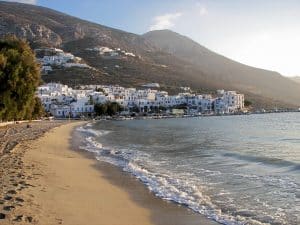
The island played an important role in Greek history especially during the revolution of 1821 where many residents of Amorgos fought alongside the rest of the Greeks in the Peloponnese and in other regions of the country. Also the fleet of Amorgos helped significantly in the naval battles against the Turks.
Visitors will have the opportunity to admire many Byzantine churches and monasteries scattered across the island and to walk through its picturesque alleys among the whitewashed stone houses of the Aegean.
The island has many accommodations for accommodation such as hotels, rooms for rent and apartments all fully equipped and with excellent facilities for their occupants. Visitors can rest in the traditional taverns and cafes of the island, enjoying their coffee and tasting some of the local delicacies.
Anafi
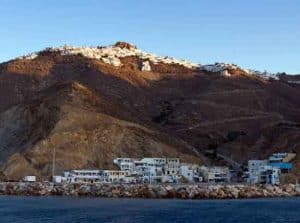
The landscape that prevails in Anafi is a source of inspiration for every traveler. The vaulted one-room houses with the round roofs are different from the usual square or triangular ones found on other Cycladic islands, and in combination with the picturesque windmills compose scenes from a fairy tale that will remain indelibly in your memory.
The capital of Anafi is Chora, amphitheatrically built on the spot where there are today the ruins of the old Venetian Castle and at a distance of about 3 kilometers from Chora you will see the small picturesque port of Agios Nikolaos.
The island has interesting attractions such as the ruins of the ancient city at the top of Kasteli hill parts of which are still preserved today, ruins of the Temple of the god Apollo, the traditional windmills and two remarkable monasteries of Zoodochos Pigi and Panagia Kalamiotissa which dates back to about 1710 AD
Andros
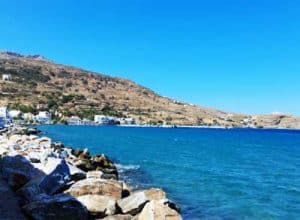
In Andros there are many traditional villages and important attractions to visit, such as the cosmopolitan resort of Batsi and the mountain village of Aprovato from where you will have the opportunity to enjoy a unique panoramic view of the entire island and the sea.
We also suggest to visit the cave of Aladdin with its impressive stalactites and stalagmites and to tour the old part of Chora, the Medieval City, where the picturesque cobbled streets, the well-preserved mansions and the central square give a special touch to the landscape of the capital Andrew.
In the eastern part of the island, at a distance of about 5 kilometers from Chora, you will find the village of Apoikia, where the Sariza spring is located, which is known for its mineral water and its healing properties.
Antiparos
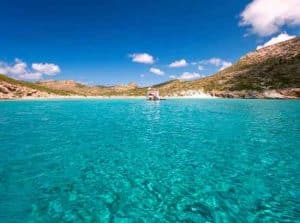
The capital of the island is Chora, a picturesque fishing harbor with colourful fishing boats, taverns and hospitable residents, the most habitable settlement in Antiparos. The main road across from the pier is the commercial centre of the area with many small shops for locals and tourists.
In Chora you will find picturesque white houses with flowered courtyards and the ruins of the old Venetian castle which includes four special churches of Christ, Saint Anthony, Saint John and Saint Nicholas.
Antiparos is surrounded by many small islands that are worth visiting. We recommend the islet of Despotiko which is a site of great archaeological importance and which you can reach by boats departing from the coastal village of Agios Georgios in the southern part of Antiparos.
Donoussa
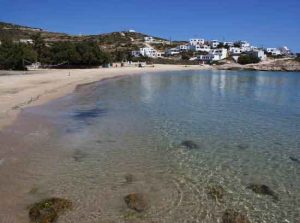
Due to the small size of the island, the visitor can walk around it from one end to the other, enjoy the wonderful natural scenery and be inspired by the panoramic view of the blue Aegean.
Donoussa is also popular with those who travel the Aegean Sea by boat or charter yachts for their holidays.
The capital of the island is called Donoussa and it is also the only port. If you go about 10 kilometers to the north of Kalotaritissa you will come across a small settlement with a very picturesque beach to enjoy your swim.
The island has no hotel units, but there are several rooms for rent for accommodation. Although new tourist accommodation has been constantly being built in recent years, it is not easy to find availability especially during the high summer season.
Folegandros
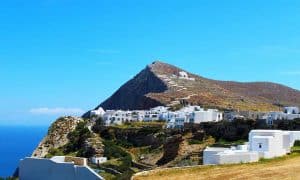
The island’s landscape is a dramatic tapestry of rugged cliffs plunging into the sea, terraced fields ablaze with wildflowers, and secluded beaches accessible only by foot or boat. The capital, Chora, perched high on a cliff-top, is a labyrinth of narrow lanes, whitewashed houses, and blooming bougainvillaea, encapsulating the Cycladic charm in its most authentic form.
Exploring Chora is like wandering through a living museum, with its medieval Kastro (castle) area, where the passage of centuries feels like mere moments. The squares are lined with traditional tavernas and kafeneia (coffee houses), where locals and visitors alike gather under the shade of trees to share stories, laughter, and local delicacies, creating a sense of community and belonging.
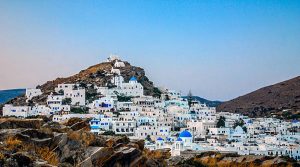
The island’s landscape is a picturesque montage of golden beaches, azure waters, and hilly terrains dotted with olive groves and vineyards. The charm of Ios is further enhanced by its traditional Cycladic architecture, with whitewashed buildings, narrow cobblestone pathways, and blue-domed churches creating postcard-perfect scenes at every turn.
At the heart of Ios lies Chora, the island’s capital, perched atop a hill and offering stunning views of the Aegean Sea. By day, Chora is a tranquil maze of winding alleys and traditional shops selling local crafts and delicacies. As the sun sets, the town transforms, with bars and clubs coming to life, pulsating with music and dance till the early hours, attracting a young and energetic crowd from across the globe.
Ios boasts an array of beaches that cater to all preferences, from the bustling Mylopotas Beach, a hub for water sports and beach parties, to the secluded coves of Manganari, where the crystal-clear waters provide a peaceful haven for relaxation and reflection.
Iraklia
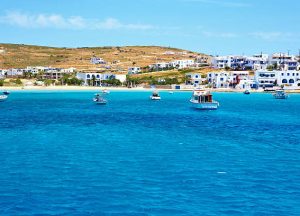
Like most of the surrounding islands, Iraklia also has quite an interesting history to which the visitor is transported when gazing at the ruined Castle that rises on the hill near Livadi beach.
In Heraklia there are only two settlements, Agios Georgios which is the port of the island and Chora or Panagia which are connected to each other by a 5 kilometer road.
The island has an idyllic landscape with rich vegetation and beautiful lacy beaches. You can swim at Livadi, Pigadi, Karvounolakkos, Spilia, Alimias beaches, some paved with sand and others with pebbles. Access is mainly on foot, but some beaches can only be reached by boat.
Some excursions are organized on the island which go around Heraklia so that the visitor can get to know it better and stop at some isolated coves for swimming. Heraklia, due to its very small size, is ideal for walking and exploring.
Kea
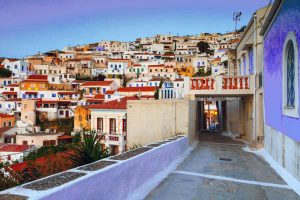
The island’s terrain is a rich tapestry of rugged hills, verdant valleys, and picturesque coves. Kea’s beaches, ranging from sandy expanses to secluded pebble coves, are among its greatest treasures. Otzias and Koundouros beaches, with their clear, calm waters, are perfect for families, while the remote east coast beaches offer serene retreats for those looking to escape the crowd.
Kea’s natural landscape is a hiker’s paradise. Marked trails crisscross the island, leading adventurers through ancient oak forests, past terraced fields, and along scenic coastlines. These paths not only reveal the island’s breath taking beauty but also its rich biodiversity, including rare plant species and a wide array of birdlife.
Koufonisia
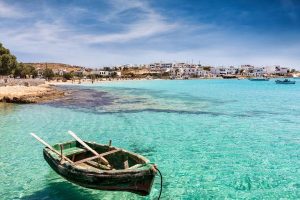
Explore the charming village with its whitewashed houses and narrow alleyways, where time seems to stand still. Indulge in fresh seafood at local tavernas or sip on a cocktail while watching the stunning sunset paint the sky in hues of pink and orange.
For adventure seekers, Koufonisia has plenty to offer – from snorkeling in underwater caves to hiking along rugged coastal trails. Don’t miss out on visiting Pori Beach, known for its dramatic cliffs and azure waters perfect for a refreshing swim.
Whether you’re looking for relaxation or excitement, Koufonisia has something for everyone. Immerse yourself in the laid-back atmosphere of this picturesque island and create memories that will last a lifetime.
Kythnos
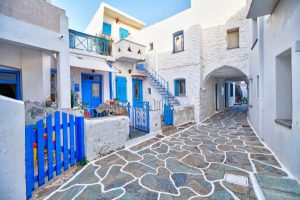
Chora, the main town of Kythnos, boasts traditional white-washed houses adorned with colorful bougainvillea flowers. Wander through its narrow streets and soak in the authentic Greek charm that permeates every corner.
For beach lovers, Kythnos does not disappoint. From secluded coves to sandy shores lined with tamarisk trees, there is a spot for everyone to unwind and enjoy the sun-kissed Mediterranean beauty.
Don’t miss out on trying some local delicacies at family-run tavernas serving fresh seafood caught right off the coast. And if you’re feeling adventurous, take a dip in one of Kythnos’ natural thermal springs – a rejuvenating experience like no other.
Whether you’re seeking tranquillity or adventure, Kythnos has something special to offer every traveler looking to discover Greece’s lesser-known treasures.
Kea
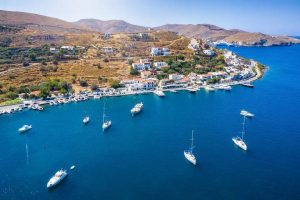
Hiking enthusiasts will love exploring the network of trails that crisscross the rugged landscape, leading to secluded beaches and breathtaking viewpoints. Don’t miss out on sampling local delicacies at traditional tavernas serving fresh seafood and regional specialties.
Whether you’re relaxing on one of Kea’s sandy beaches or wandering through charming cobblestone streets, this lesser-known island is sure to leave a lasting impression on your heart.
Milos
Nestled in the heart of the Cyclades, Milos is a hidden gem waiting to be explored. With its captivating lunar landscape and crystal-clear waters, this island offers a truly unique experience for travelers seeking something off the beaten path.
Milos is renowned for its stunning beaches, from Sarakiniko with its white rock formations resembling a moonscape to Fyriplaka with its golden sand and turquoise sea. The picturesque fishing villages dotting the coastline add a charming touch to the island’s rugged beauty.
History buffs will appreciate visiting the ancient Roman theater and catacombs, while foodies can indulge in fresh seafood at waterfront tavernas. Don’t miss out on experiencing unforgettable sunsets at Plaka or taking a boat tour around Kleftiko’s impressive rock formations.
Whether you’re looking for relaxation or adventure, Milos has something for everyone – making it a must-visit destination in the Cyclades.
Mykonos
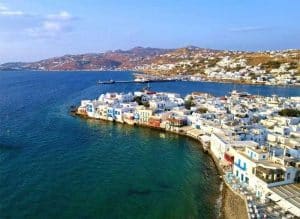
The allure of Mykonos is undeniable. Its narrow, winding streets, framed by flower-draped balconies and iconic windmills, offer a picturesque setting that seems almost painted by hand. The island’s capital, Mykonos Town (also known as Chora), is a labyrinth of alleys designed to confuse pirates in times gone by. Today, these same pathways beckon visitors with their hidden chapels, chic boutiques, and inviting tavernas.
Mykonos boasts an array of beaches, each with its own character. From the family-friendly Ornos and Psarou, known for their crystal-clear waters and fine sands, to the party havens of Paradise and Super Paradise, where world-renowned DJs keep the beats going from dusk till dawn. For those seeking a more serene shore, the remote reaches of Agios Sostis and Fokos offer peaceful retreats away from the crowds.
Naxos
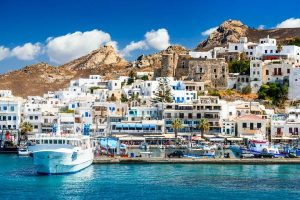
One of the must-visit sites on the island is the Portara, an iconic marble gate that stands proudly overlooking the sea. Steeped in history and mythology, this ancient monument is a testament to Naxos’ rich past.
For those seeking adventure, Mount Zas beckons with its hiking trails offering breathtaking views of the Aegean Sea. And let’s not forget about the local cuisine – fresh seafood, juicy tomatoes, and creamy cheese await food lovers at every corner.
Whether you’re into relaxing on sandy beaches or exploring historical ruins, Naxos has something for everyone. So pack your bags and get ready for an unforgettable experience on this enchanting island in the heart of Greece.
Paros
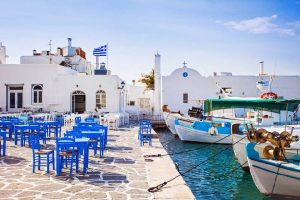
For beach lovers, Golden Beach and Santa Maria offer crystal-clear waters perfect for swimming and water sports. If you’re seeking tranquillity, head to the picturesque village of Naoussa with its fishing port and laid-back atmosphere.
Don’t miss out on trying local delicacies like fresh seafood dishes at seaside tavernas or indulging in homemade ice cream at one of the quaint cafes. For history buffs, a visit to the Archaeological Museum of Paros is a must to learn about the island’s rich past.
Whether you’re exploring ancient ruins, relaxing on sandy beaches or dancing until dawn in beach bars – Paros has something for every traveller craving an authentic Greek experience.
Santorini
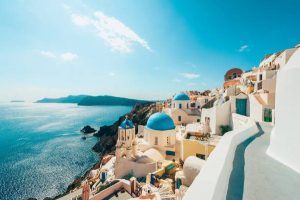
Santorini is not just about its captivating views; it also offers visitors a chance to explore its rich history and culture. From ancient ruins at Akrotiri to charming villages like Oia, there is something for everyone on this enchanting island.
Indulge in delicious Mediterranean cuisine at seaside tavernas or sip on local wines while watching the sunset. For adventure seekers, hiking along the caldera rim or exploring volcanic beaches are great options.
Whether you spend your days lounging on black sand beaches or wandering through narrow cobblestone streets, Santorini will leave you spellbound with its beauty and charm.
Serifos
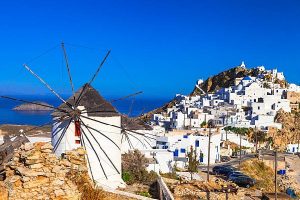
For beach lovers, Livadi and Livadakia offer golden sands and crystal-clear waters perfect for sunbathing and swimming. Explore the ancient iron mines that dot Serifos’ landscape or hike to the top of Hora’s castle for panoramic views of the island. Don’t miss trying local delicacies at traditional tavernas serving fresh seafood and local specialties.
Whether you’re seeking relaxation or adventure, Serifos has something to offer every traveler seeking an authentic Greek experience away from the crowds.
Sifnos
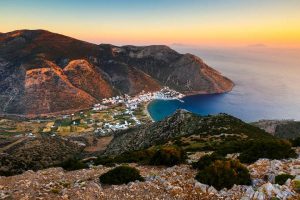
Sifnos is also famous for its delicious gastronomy – make sure to try the renowned chickpea soup and savory meat dishes at one of the cozy tavernas. For beach lovers, head to Chrissopigi Beach with crystal-clear waters perfect for swimming or relax in Kamares Beach with its golden sand.
Don’t miss visiting the Monastery of Panagia Vouno perched on a hill offering breathtaking views of the Aegean Sea. Whether you’re seeking relaxation or adventure, Sifnos has something for everyone to enjoy during their visit.
Sikinos
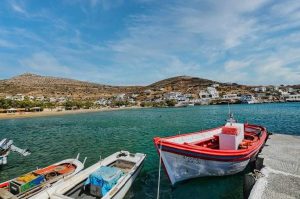
The island’s charming main town, Chora, captivates visitors with its whitewashed buildings and narrow winding streets. Explore the quaint shops and tavernas or simply relax in one of the cozy cafes while soaking in the authentic atmosphere.
Sikinos boasts beautiful beaches where you can unwind under the Mediterranean sun or take a refreshing dip in the crystal-clear waters. Whether you prefer secluded coves or more popular spots, there’s something for everyone here.
Don’t miss out on visiting Moni Episkopi, an ancient monastery perched atop a hill offering breathtaking vistas of the surrounding landscape. And make sure to savor delicious local cuisine featuring fresh seafood and regional specialties during your stay on Sikinos.
Syros
Syros, the capital of the Cyclades, is a hidden gem waiting to be discovered. This charming island offers a perfect blend of traditional Greek culture and modern amenities. Wander through the narrow streets of Ermoupoli, the main town, and admire the neoclassical architecture that reflects its rich history.
Don’t miss visiting Ano Syros, a hilltop medieval town with breath taking views of the Aegean Sea. Explore the vibrant local markets where you can sample delicious regional delicacies like loukoumades (Greek donuts) and san Michali cheese.
For beach lovers, head to Galissas Beach for crystal-clear waters and golden sand or venture to Kini Beach for its picturesque fishing village charm. Whether you’re an art enthusiast exploring museums or a foodie indulging in authentic Greek cuisine, Syros has something for everyone.
Schinoussa
Schinoussa is a small, tranquil island in the Cyclades that offers a peaceful retreat for travellers seeking relaxation and serenity. With its pristine beaches, charming villages, and laid-back atmosphere, Schinoussa is the perfect destination to unwind and recharge.
Exploring the hidden gems of Schinoussa, such as Livadi Beach and Almyros Beach, allows visitors to connect with nature and experience the unspoiled beauty of this lesser-known island. Hiking along scenic trails or enjoying fresh seafood at local tavernas are just some of the activities that make Schinoussa a unique and unforgettable destination in the Cyclades.
As you plan your trip to the Cyclades, consider adding Schinoussa to your itinerary for a truly authentic Greek island experience. Whether you’re looking for a peaceful escape or simply want to immerse yourself in the natural beauty of the Aegean Sea, Schinoussa has something special to offer every traveller who ventures off the beaten path.
Tinos
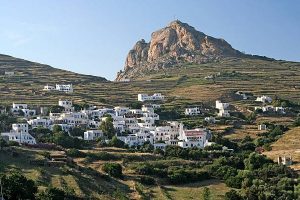
The capital town of Chora boasts beautiful architecture with narrow winding streets begging to be explored. Don’t miss the iconic Church of Panagia Evangelistria with its miraculous icon drawing pilgrims from around the world.
Nature lovers will rejoice in Tinos’ rugged coastline and hidden coves perfect for a day of relaxation by the crystal-clear waters. Hikers can tackle Mount Exomvourgo for panoramic views that will take your breath away.
Indulge in local delicacies like louza (cured pork) and artichokes fresh from the fields. And make sure to sample rakomelo, a traditional spirit infused with honey and cinnamon – perfect for sipping as you watch the sunset over the Aegean Sea.
